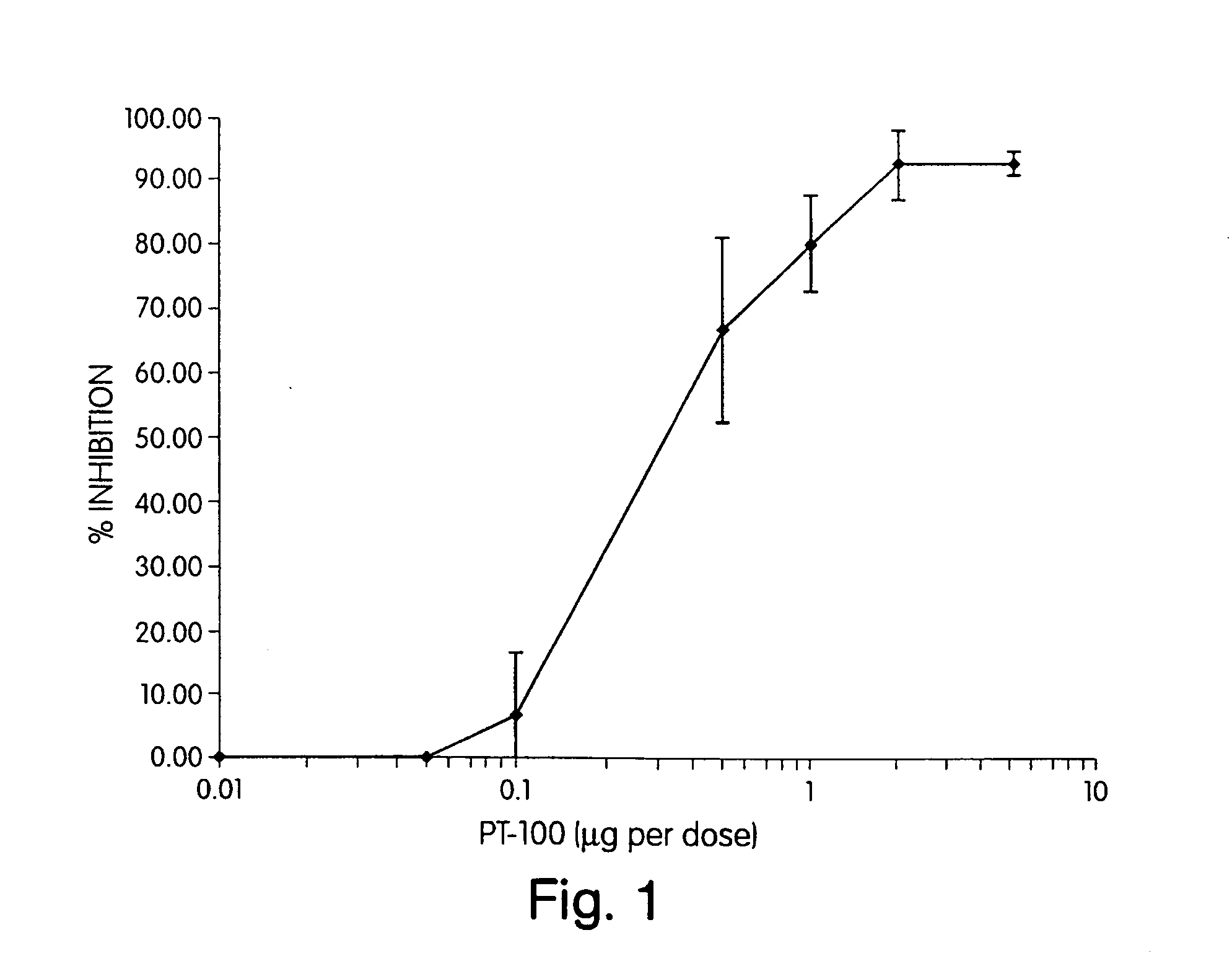Regulation of substrate activity
a technology of substrate activity and inhibitors, which is applied in the direction of peptide sources, applications, angiogenin, etc., can solve the problems of increased attachment loss, interfering with hiv-1 cell infection, and proteases, and achieves positive therapeutic benefits for patients, suppressing dpp-iv activity, and increasing bioavailability of active chemokin
- Summary
- Abstract
- Description
- Claims
- Application Information
AI Technical Summary
Benefits of technology
Problems solved by technology
Method used
Image
Examples
example 1
General Synthesis of Active Compounds
[0074] Synthesis of the boroPro compounds of this invention are described in Bachovchin '493. In general, the preparatory technique involves straightforward peptide coupling chemistry. The standard peptide coupling chemistry methods and procedures used in this invention are readily available. Examples of books using these methods include, but are not limited to, the following citations incorporated herein by reference: P. D. Bailey, An Introduction to Peptide Chemistry, Ed.: John Wiley & Sons, 1990; Miklos Bodansky, Peptide Chemistry, A Practical Textbook, Ed.: Springer-Verlag, 1988; Miklos Bodansky, Principles of Peptide Synthesis, “Reactivity and Structure Concepts in Organic Chemistry,” Volume 16, Ed.: Springer-Verlag, 1984; and Miklos Bodansky, Principles of Peptide Synthesis, “Reactivity and Structure Concepts in Organic Chemistry,” Volume 21, Ed.: Springer-Verlag, 1984.
[0075] The compounds of the invention can begin with the synthesis of ...
example 2
Synthesis of Active Cyclic Compounds
[0078] In aqueous solution at all pH values, the inhibitors exist as a slowly equilibrating mixture of two conformations: an open chain structure (linear boroProline compound) which is inhibitory (active species), and a cyclic structure (cyclic boroProline compound) which is non-inhibitory (inactive species). The open, active, inhibitory chain species is favored at low pH while the cyclized structure is favored at neutral pH. The reaction is fully reversible: the open chain becomes predominant at low pH. The open chain to cyclic species reaction involves a trans to cis isomerization of the proline and the formation of a new N—B bond. The cyclized structure is the boron analog of a diketopiperazine, a product often seen in peptide chemistry. Cyclization liberates one equivalent of H+ thereby explaining the requirement for base in the cyclization reaction and acid in the opening reaction. The cyclic structure is quite stable in aqueous solutions of...
example 3
Assessment of Functional Activity
[0085] The compounds of the invention have at least the following properties: (I) binding site is the DPP-IV active site; and (ii) exhibit cross-species specificity.
[0086] The assays which are used to assess functional activity include: DPP-IV activity, oral and subcutaneous bioavailability assays, and are described below.
PUM
| Property | Measurement | Unit |
|---|---|---|
| dissociation constant | aaaaa | aaaaa |
| dissociation constant | aaaaa | aaaaa |
| dissociation constant | aaaaa | aaaaa |
Abstract
Description
Claims
Application Information
 Login to View More
Login to View More - R&D
- Intellectual Property
- Life Sciences
- Materials
- Tech Scout
- Unparalleled Data Quality
- Higher Quality Content
- 60% Fewer Hallucinations
Browse by: Latest US Patents, China's latest patents, Technical Efficacy Thesaurus, Application Domain, Technology Topic, Popular Technical Reports.
© 2025 PatSnap. All rights reserved.Legal|Privacy policy|Modern Slavery Act Transparency Statement|Sitemap|About US| Contact US: help@patsnap.com



